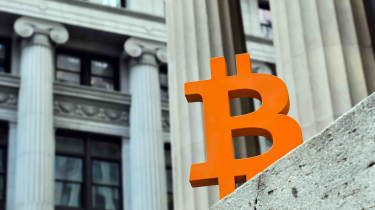cryptocurrency
A new executive order aims to begin shaping national policy concerning cryptocurrencies, from development to national security to consumer and investor protections.The White House on Wednesday announced steps toward regulating digital-asset transactions through a new cryptocurrency executive order (EO) issued on March 9.
And while regulation has infamously gotten the bad rap that it kills economic activity, this could be an important step in helping cryptocurrencies develop into a more vibrant market.
In the cryptocurrency executive order, President Joe Biden has asked a host of federal agencies to formulate an approach that addresses the risks (and harnesses the potential benefits) of digital assets and their underlying technology.
Among the main details of the crypto EO, President Biden’s federal government effort outlines a national policy for assessing digital assets across six main objectives:
Consumer and investor protectionFinancial stabilityIllicit financeU.S. leadership in the global financial system and economic competitivenessFinancial inclusionResponsible innovationThe administration aims to “reinforce American leadership in the global financial system and at the technological frontier” while also “mitigating the risks for consumers, businesses, the broader financial system and the climate.”
The U.S. currently lacks a framework for the development of cryptocurrencies, which could result in America falling even further behind other countries’ digital-currency efforts. The federal government has been notoriously quiet about crypto; the most notable position from a federal agency is the IRS’ Notice 2014-21 declaring the asset class to be treated as “property” for tax purposes.
Digital coins surged in response to the crypto executive order, including top cryptocurrencies such as Bitcoin (+9%) and Ethereum (+6%). However, the timing of their runs might have seemed a bit off; the movement in digital asset prices came ahead of the EO. That was because the U.S. Treasury prematurely published a related statement from Secretary Janet Yellen, which it later unpublished then republished following the executive order’s official release.
Why Does This Matter?The cryptocurrency market has grown substantially in recent years, nearing $3 trillion as recently as November. But it has still been wracked by volatility – that market size has swooned by nearly half as recently as early march – as well as a general sense of uncertainty about what the asset’s path forward would look like given a mostly hands-off approach by the federal government.
Prior to the EO, there had been a little movement of late. Provisions around cryptocurrency transaction reporting passed in 2021’s Infrastructure Investment and Jobs Act; many saw this as a precursor to more comprehensive regulation and oversight coming from the federal government.
However, Biden’s new cryptocurrency executive order positions the government as more of a steward for digital-asset innovation in the U.S. It also recognizes a need to provide consumer and investor protections, much as the federal agencies currently do for other securities bought and sold on public markets.
Further, the U.S. looks to harness the innovation potential of digital assets for not only potential economic gain, but for national security purposes as well.
“The Administration will continue work across agencies and with Congress to establish policies that guard against risks and guide responsible innovation, with our allies and partners to develop aligned international capabilities that respond to national security risks, and with the private sector to study and support technological advances in digital assets,” the EO reads.
Markets appear, at least initially, to welcome the beginning stages of cryptocurrency regulations and see this executive order as constructive for digital currencies going forward.
124 Companies That Have Pulled Out of Russia
stocks
124 Companies That Have Pulled Out of RussiaThe list of private businesses announcing partial or full halts to operations in Russia is ballooning, increasing economic pressure on the country.
March 9, 2022
Your Guide to Roth Conversions
Special Report
Tax Breaks
Your Guide to Roth ConversionsA Kiplinger Special Report
February 25, 2021
5 Superb Stocks to Shield Against Stagflation
stocks
5 Superb Stocks to Shield Against StagflationSoaring inflation and slowing economic growth have many investors seeking out stocks that will tamp down stagflation risk. Here are five top-rated nam…
March 7, 2022
17 Bitcoin ETFs and Cryptocurrency Funds
cryptocurrency
17 Bitcoin ETFs and Cryptocurrency Funds The rapidly growing world of Bitcoin ETFs have expanded in recent months to include futures-based cryptocurrency funds. Here are 17 ways to ride the c…
March 9, 2022
Could Bitcoin Replace Gold as the New Safe Haven?
cryptocurrency
Could Bitcoin Replace Gold as the New Safe Haven?A look back through gold’s history reveals some interesting patterns that could point to what may come next. However, no matter what the future holds,…
February 19, 2022
3 Crypto Mining Stocks With Massive Upside Potential
cryptocurrency
3 Crypto Mining Stocks With Massive Upside PotentialAnalysts see solid growth prospects for cryptocurrency miners. Here, we look at a few Buy-rated opportunities.
January 19, 2022
Is There a Right Way to Invest in Bitcoin in 2022? Yes.
cryptocurrency
Is There a Right Way to Invest in Bitcoin in 2022? Yes.Before you buy into Bitcoin, Ethereum or any other form of cryptocurrency, first, decide whether you want to be a dabbler (which is OK!) or a serious …
January 19, 2022
